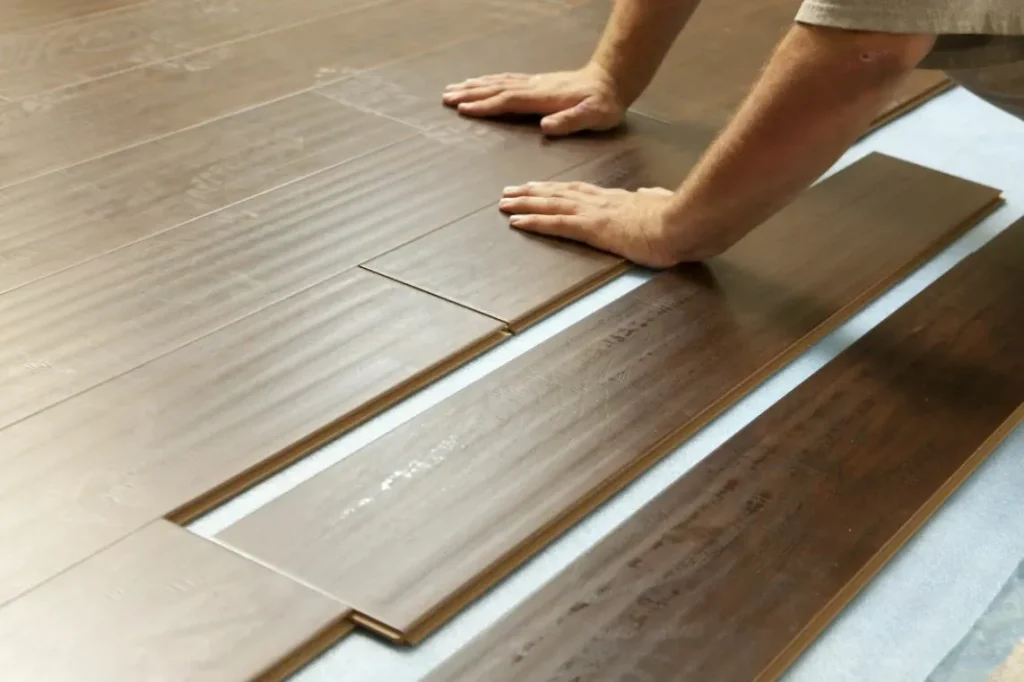Laminated wood floors are a popular choice among homeowners who want to add warmth, beauty, and durability to their interiors. With its easy-to-install features and affordable price point, laminate flooring has become an attractive option for those who wish to renovate their homes without breaking the bank.
However, before diving into this project, it is essential to have a clear understanding of the materials and tools needed as well as the steps involved in installing these floors.
In this article, we will provide you with a comprehensive guide on how to install laminated wood floors. We will take you through each step of the process, from preparing the subfloor to laying down the planks.
Additionally, we will also discuss some pros and cons of doing this installation yourself versus hiring a professional installer. By following our guidelines and considering the factors we present, you can make an informed decision about whether or not installing laminated wood floors is right for you.
Materials and Tools Needed
The installation of laminated wood floors requires specific materials and tools, such as a tapping block, pull bar, spacers, circular saw, measuring tape, utility knife, and adhesive.
A tapping block is used to gently tap the planks into place without damaging them. The pull bar is necessary for fitting the last row of planks against a wall or baseboard. Spacers are critical in ensuring that the planks are evenly spaced throughout the installation process.
A circular saw is used to cut the planks to fit around corners and obstacles. A measuring tape ensures that each plank is cut precisely according to measurements taken beforehand. A utility knife can be used to make small adjustments or cuts during installation. Adhesive is essential for securing any loose boards or filling gaps between boards after installation.
Having all these materials and tools ready before starting your project will help ensure a successful outcome and make your job easier overall.
Step-by-Step Guide to Installing Laminated Wood Floors
First, it is important to carefully prepare the subfloor by ensuring it is clean, level, and free of any debris or bumps that could affect the installation process. It is recommended to sweep or vacuum the subfloor thoroughly before starting the installation process. Additionally, make sure to check for any unevenness in the subfloor and use a leveling compound if necessary.
Next, lay down underlayment over the subfloor before installing the laminated wood floor planks. This helps to provide a moisture barrier as well as reduce noise when walking on the floor.
Once this is complete, begin laying down the planks starting from one corner of the room and working your way across. Be sure to stagger each row of planks so that they are not aligned with each other.
Finally, finish off by using trim pieces around edges and corners for a polished look. While installing laminated wood floors can be done DIY-style with proper preparation and tools, it’s important to weigh out both pros and cons before making a decision.
Pros and Cons of Installing Laminated Wood Floors Yourself
In weighing the option of DIY installation for laminated wood flooring, one must consider both the advantages and disadvantages to this method. Here are some pros and cons to keep in mind:
1. Cost savings: One of the biggest advantages of installing laminated wood flooring yourself is that it can save you a significant amount of money on labor costs.
2. Flexibility: When you install laminate flooring yourself, you have more control over the timeline and can work at your own pace.
3. Satisfaction: Completing a DIY project can provide a sense of accomplishment and pride in your work.
4. Risks: There are risks associated with self-installation, such as improper installation leading to damage or voiding product warranties.
It is important to weigh these factors carefully before deciding whether DIY installation is right for you. If you have experience working with tools and are confident in your abilities, installing laminated wood floors yourself may be a viable option. However, if you lack experience or feel uncertain about the process, it may be best to hire a professional installer for optimal results.
Frequently Asked Questions
How long will it take to install laminated wood floors?
The time it takes to install laminated wood floors varies depending on the size of the room, skill level of the installer, and any unexpected complications. On average, a 500-square-foot room can take about 2-3 days for a professional installation team to complete.
Can laminated wood floors be installed over existing flooring?
Yes, laminated wood floors can be installed over existing flooring, provided that the surface is level and structurally sound. However, it’s recommended to remove carpeting and any other soft flooring materials before installation to ensure a better result.
What is the best underlayment to use for laminated wood floors?
The best underlayment for laminated wood floors depends on the subfloor type. Foam underlayments are suitable for concrete or wood subfloors, while cork underlayments provide better sound insulation and moisture resistance. Consult with a professional to choose the appropriate option.
Can laminated wood floors be installed in high-moisture areas?
Laminated wood floors are not recommended for high moisture areas, as they can warp and buckle. However, with proper sealing and ventilation, it is possible to install them in these spaces. Consider professional installation for optimal results.
How do I maintain and clean my laminated wood floors after installation?
To maintain laminated wood floors after installation, use a soft microfiber mop and avoid harsh chemicals. Wipe up spills immediately and sweep or vacuum regularly to remove dirt and debris. Avoid excess moisture and protect from scratches with furniture pads.
Conclusion
Installing laminated wood floors can be a fun and rewarding DIY project, but it’s important to understand the pros and cons before jumping in. While the process itself is relatively simple, it requires a variety of materials and tools, including underlayment, laminate flooring planks, spacers, tapping blocks, pull bars, saws, and measuring tools.
Finally, use spacers between planks for additional support while installing. While doing this yourself may save you money on labor costs , it could also lead to potential errors that can be costly in time and money. Additionally if not installed correctly it could cause damage to subfloors or even worse pose safety hazards.
Therefore it is always better to weigh both sides before starting any DIY project. It’s always better safe than sorry!
Types Of Laminate Flooring & Where It Can Be Installed



